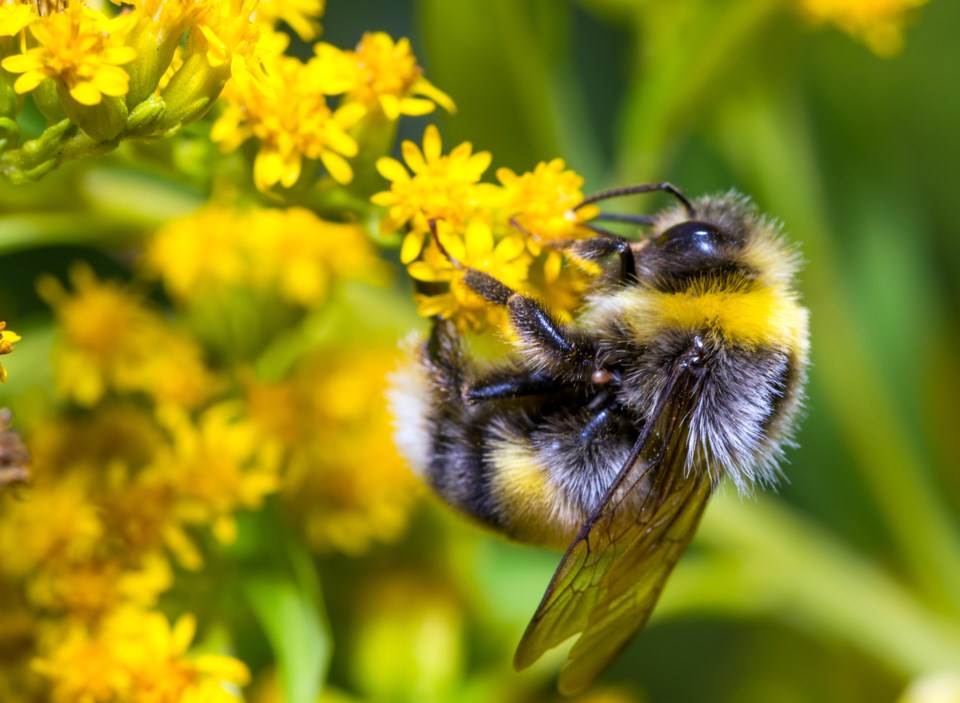BarrieToday welcomes letters to the editor at [email protected]. Please include your daytime phone number and address (for verification of authorship, not publication).
*************************
I am extremely concerned about the alarming decline of our precious pollinators right here in Simcoe County and around the world.
On Earth Day 2019, the UN provided us with an alarming report: Bumblebees have almost completely disappeared from the face of the Earth.
Their populations have declined by an astounding 89 per cent! Canada has over 850 native bee species and an increasing number are at the risk of extinction.
Along with other pollinators, bumblebees help pollinate over 100 crops, including fruits, veggies and nuts.
As a matter of fact pollinators, like bumblebees and others are responsible for every third mouthful of food that we eat.
I would be very upset if I no longer could eat apples, blueberries, avocados, oranges, chocolate, pumpkins, squash, cucumbers, sunflowers seeds, bananas, strawberries, corn, pumpkins, or almonds.
No species exists in isolation from all others. The disappearance of a species tears the web a little. As the threads in the delicate web of life are destroyed, it will have a rippling effect on the whole ecosystem. If too many are destroyed like our pollinators, the web may not be repairable. We therefore need to protect as much biological diversity as possible for own survival.
One way we can help protect our precious pollinators is to ensure that our pollinators have many opportunities to gather nectar from biologically diverse green spaces.
Native plants are extremely adaptive and have evolved to maximize the conditions found in specific microclimates in our community. Most are very water efficient and are able to thrive in poor soil conditions, as well as being pest and disease resistant.
Unfortunately, many domesticated plants bred for beauty have lost much of their capacity to produce nectar and pollen. Some wonderful looking creations are so frilly that pollinators simply cannot reach the pollen.
Some pollinators, like the Karner blue butterfly, are no longer found in Canada! This butterfly depended on specific native vegetation (wild lupine) for its larva stage. It was unable to adapt to non-native species.
So where can we find native and naturalized plants growing freely and abundantly?
When one starts to search for large swaths of green spaces that are naturalized and could be naturalized, they can be discovered in a multitude of green spaces in towns and in the country.
Not only do honey bees need naturalized areas brimming with a great variety of flora, but they also need a variety of trees to collect resin which are used in the hive as defiance against pests, pathogens, and for nest construction and sealing.
In my travels, I have observed where townships have clear-cut all pollinator food sources along roadsides leaving behind a dead, static monoculture of shorn stubbles.
By eliminating this practice, not only will there be more opportunities for pollinators to feed on readily available food sources, but there will be a significant reduction of greenhouse gas when the use of mowers is reduced.
In towns, I have observed many areas where the mowing could be drastically reduced. A perfect example can be found in Barrie along the lakeshore side of the fence that runs parallel to the GO train railroad track. There is no need for anyone to walk along this long strip, but it is continually mowed during the summer months.
The question that begs to be answered is why?
I am urging all the stakeholders to form a committee that will address these serious concerns and develop a bold master plan where all the public areas that can be naturalized are identified along with solutions for increasing naturalization.
Gwen Petreman
Barrie
*************************



